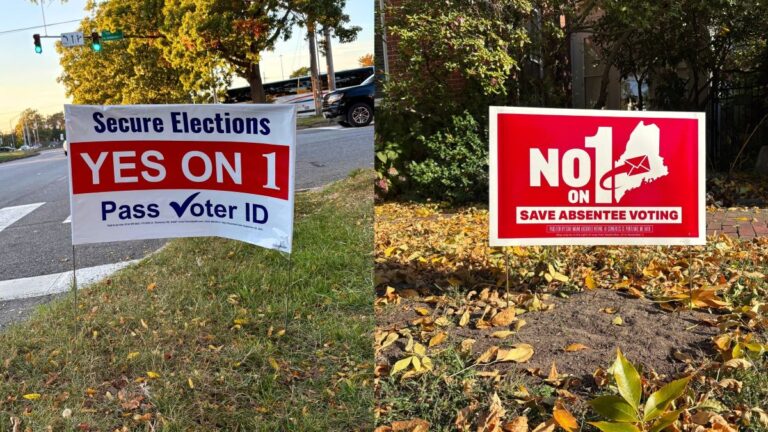As the daughter of a dad with paranoid schizophrenia, Delaney Ruston, a physician and filmmaker, wanted to find a better way to help her father when he was in crisis.
In a film she made with the National Resource Center on Psychiatric Advance Directives, Ruston recalled her dad showing up at her doorstep, suffering from psychosis, hundreds of miles from his home. He would refuse treatment during an episode, but Ruston also knew he didn’t want to stay in a state of paranoia.
Ruston looked for ways to lay out her father’s wishes in advance, so she and his treatment team could better help him in the moment. She came across the psychiatric advance directive, a legal document that allows a person to outline a preferred treatment plan before a crisis.
“The process of completing a psychiatric advance directive makes people feel better about their mental health care and their providers. And if they go into a crisis they are indeed more likely to get the care they want,” said Ruston.
As part of his directive, Ruston’s dad spelled out that smoking more than one pack of cigarettes a day is a sign of his deepening depression, that he does not want lithium as a form of treatment, and that his daughter should be called if he goes into a crisis.
“If we want to realize the potential benefits of them, we need to have more out there,” said Dr. Marvin Swartz, a psychiatrist and professor of psychiatry at Duke University Medical Center, who helps to run the National Resource Center on Psychiatric Advance Directives.
According to the Maine chapter of the National Alliance on Mental Illness, over 200,000 Maine adults have a mental health condition. Across the state, thousands are on waiting lists for treatment.
In dozens of interviews, advocates told The Maine Monitor these directives could help ease the backlog by facilitating important treatment decisions in advance and allowing people to have a say in their care plan.
“We as health-care providers are able to intervene sooner (if a patient has a mental health directive) because we have consent to treat. We feel comfortable treating a patient in a certain way,” said Dr. James Wolak, the vice president of medical affairs and intensive services at Maine Behavioral Healthcare, part of the MaineHealth system.
Under the federal Patient Self-Determination Act, hospitals and treatment facilities that accept federal assistance (most in Maine do) must ask and document if someone has a mental health or psychiatric advance directive, or if they would like one.
But awareness of these legal documents among patients and providers is rare.
If a patient does fill one out, there is no central database where they are stored, and the system relies on patients and family members to inform hospitals and first responders of their existence. Forms can get lost if a person is transferred between providers, and protocols for asking patients are inconsistent.
“I have been in Maine for over 20 years and I have never seen one,” said Dr. John Campbell, senior physician executive at Northern Light Acadia Hospital, a psychiatric facility in Bangor. “There is a general lack of awareness they exist.”
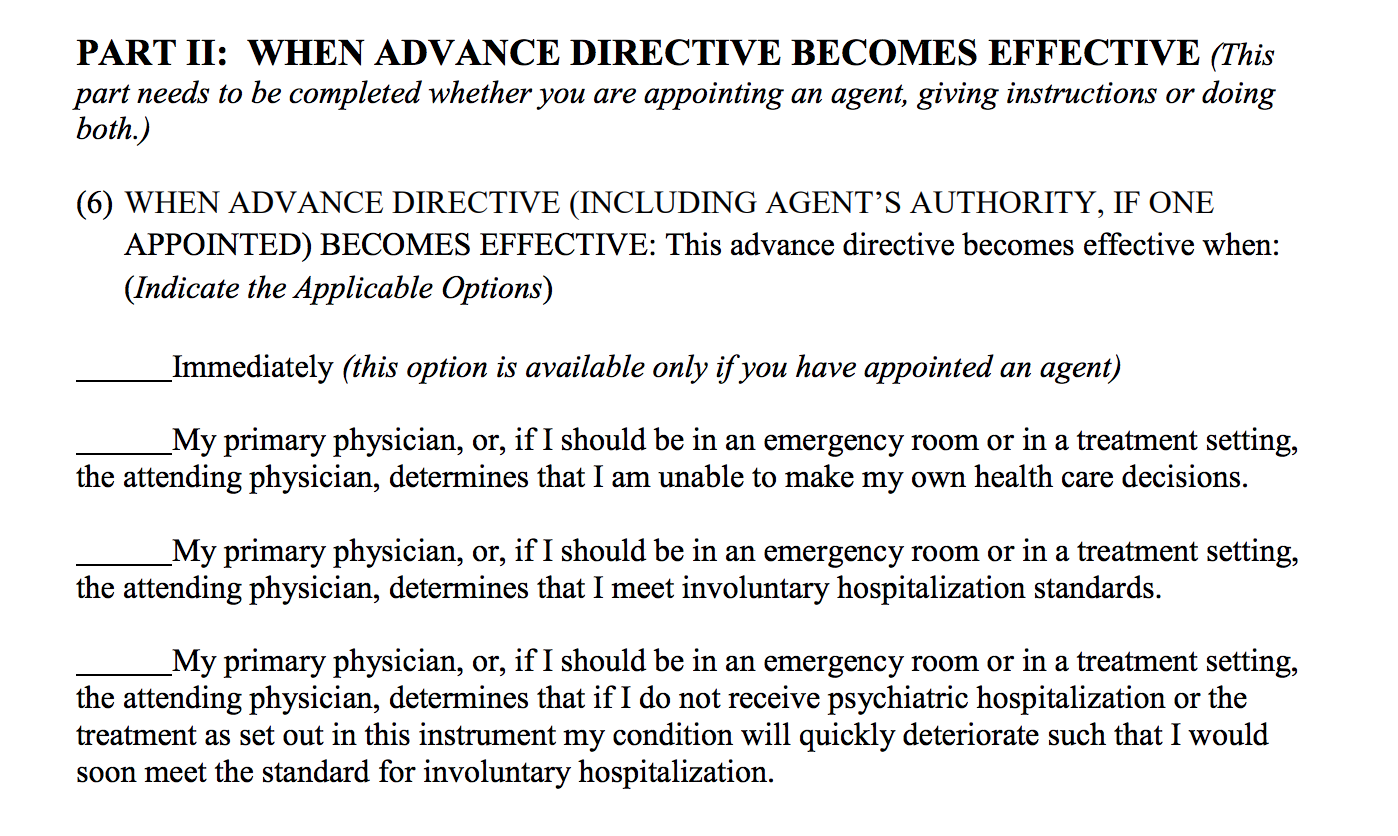
The idea of helping people plan how they want to be treated during a psychiatric crisis surfaced in the 1990s. Twenty-five states have specific statutes regarding these directives.
In Maine, those with a diagnosed mental illness have had the right to make their own treatment decisions before they go into crisis since 1993. The right was reaffirmed in 2017, under amendments made to the Uniform Health Care Decisions Act.
A psychiatric advance directive — similar to those outlining end-of-life decisions — is a legal document spelling out a person’s preferences for treatment for times they are unable to make decisions for themselves.
Advocates argue, and research suggests, that those who lay out their wishes for treatment before a crisis are less likely to be involuntarily committed or experience other adverse outcomes. A directive is designed to give a person more control over their treatment and help avoid traumatic experiences, such as the use of restraint or altercations with police.
Those with psychiatric directives are also more likely to follow their treatment plans after the crisis, said Simonne Maline, director of the Consumer Council System of Maine, an organization of people with mental health service experience advocating for mental health policy and funding.
“If we do a better job at following what people say they want and need with an inpatient stay, I think we’d have much better outcomes leaving the hospitals,” said Maline.
The documents can specify the types of treatments and medications the person prefers or wishes to avoid, and even hospitalization and therapy preferences. They also allow a person to appoint a health care agent, someone they might trust to make decisions on their behalf.
As a part of her research, Ruston spoke with a man identified in the film as Steven, who has had manic and depressive episodes, and for a time was living under bridges and in shelters. He eventually spelled out his treatment plans in an advanced directive for mental health.
“Knowing that I had the directive in place actually gave me the strength to go and get help,” Steven said. “it’s all due to having that directive in place that I got the right treatment the last time.”
‘It’s just not a part of the thought process’
Yet few people know the right to outline a preferred course of treatment in advance exists, health care professionals and patients included.
“One of the problems with advanced directives is having your health care provider actually know you have one,” said Ira Burnim, senior counsel at the Bazelon Center for Mental Health Law in Washington D.C., “I guess you could carry it around with you. That’s a little awkward.”
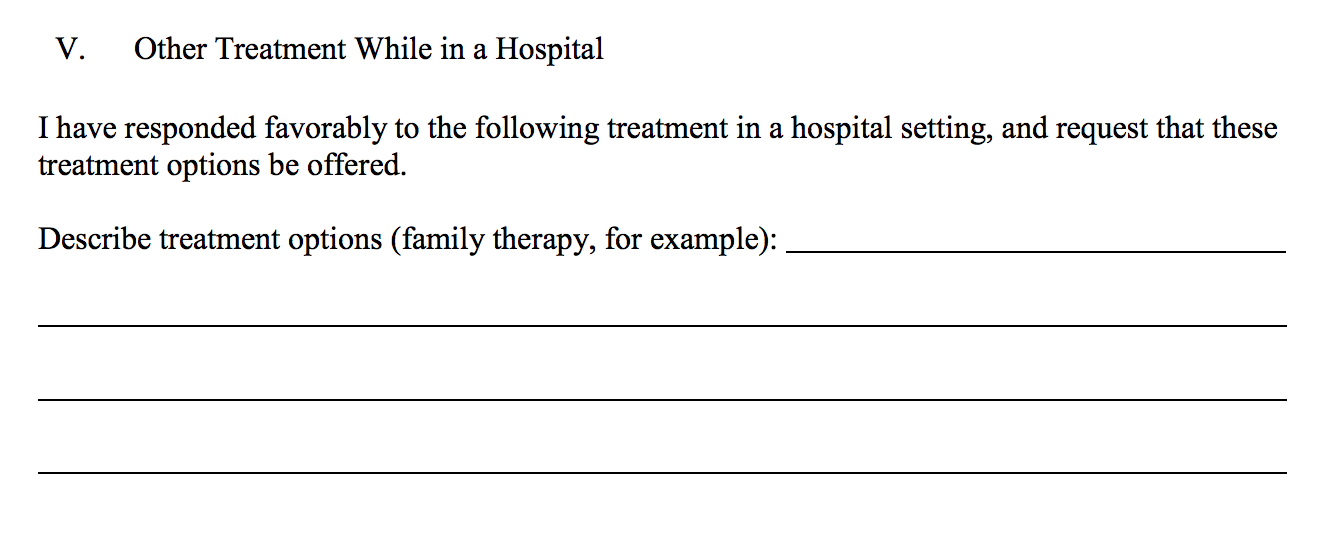
While hospital conglomerates like MaineHealth and Northern Light have protocols for asking if someone has a general medical directive, there are none for asking specifically about a mental health directive, which is a separate document.
“On the provider end, there is an equal lack of awareness,” said Dr. James Wolak. “Providers aren’t thinking, ‘Does this person have a mental health advance directive that I should be aware of?’ it’s just not a part of the thought process.”
Maline, of the Consumer Council System, has experienced this lack of awareness. As someone who lives with mental health challenges, she was at the hospital 10 times in two years but doesn’t recall ever being asked if she had a directive to guide her care, or wanted one.
Without awareness and standard protocols guiding hospitals, it is hard to determine how often these forms are used and how effective they are in advising mental health treatment. But they can serve as a starting point for conversation between patient and provider, said Wolak.
Barriers throughout
Malory Shaughnessy, the former director of The Alliance for Addiction and Mental Health in Maine, advocates for more people to create psychiatric advance directives, and said they can help people avoid unwanted hospitalizations or encounters with police.
“Even when they lose touch with reality, they are still driving the boat because you can refer back to what their wishes were and how they wanted it done,” said Shaughnessy. “It’s a great tool.”
But those interested in completing a directive are met with various hurdles, like confusing legal jargon and a requirement for two witness signatures. When someone is struggling with a mental illness, these barriers can deter them from planning advance treatment or appointing a health care proxy.
Disability Rights Maine, a nonprofit organization that advocates for the rights of those with a disability, created an online manual for filling out the form and the importance of what should be included in each section.
Once the forms are filled out, the challenge lies in ensuring a person’s wishes are known across Maine’s health care systems. Patients or family members must proactively inform nearby hospitals and emergency responders, or request they be added to electronic health records — a potential hurdle for someone already struggling.
Without consistent protocols for health care providers to inquire about mental health treatment plans or a standard system for collecting them, a directive can get lost when a patient is transferred between providers.
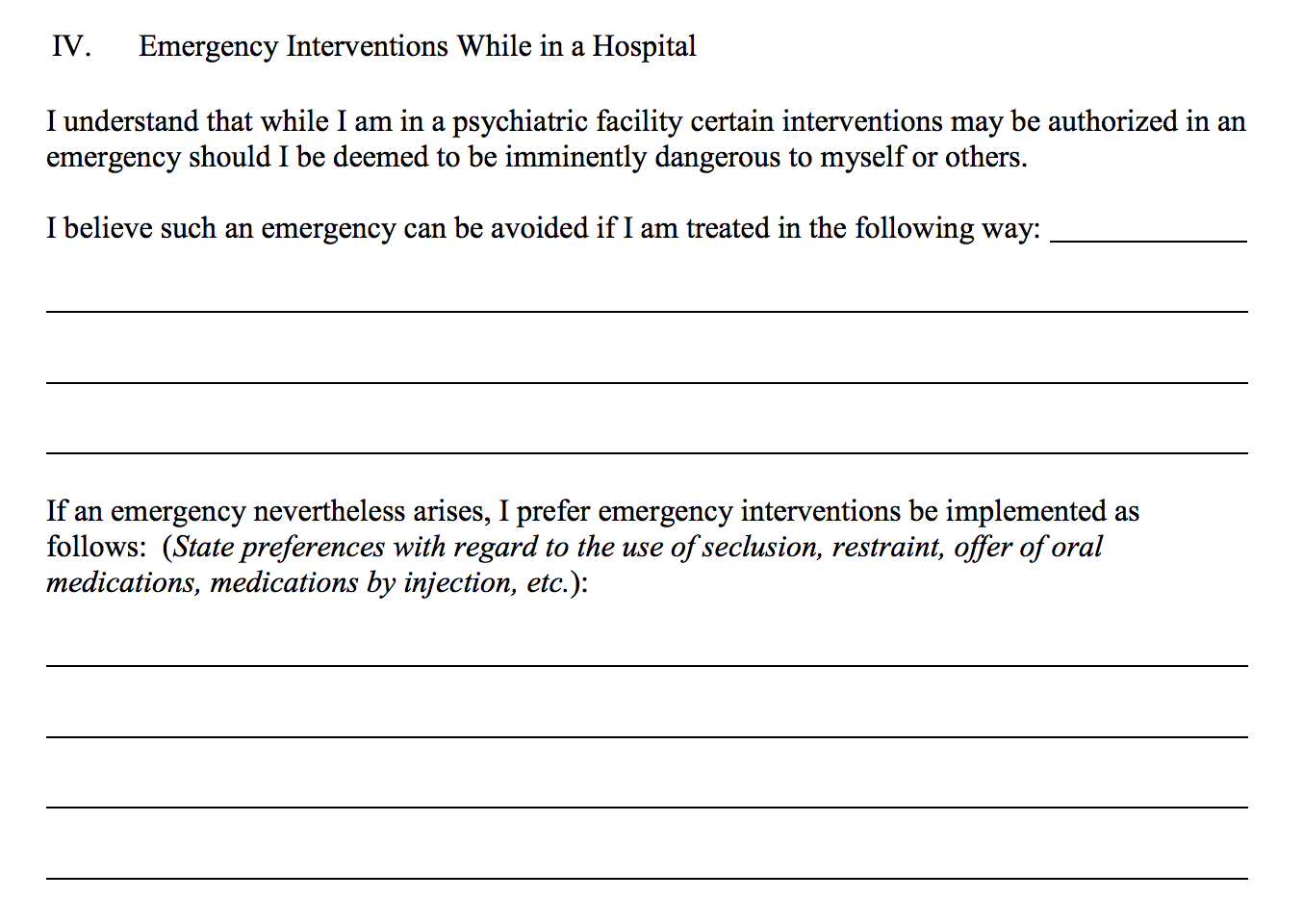
At Northern Light Acadia Hospital, said Campbell, the document would need to be physically scanned into the system. But each health record might then be stored in different files, and the same hospital might keep it in different places.
Without a clear landing place, not only is there a lack of awareness they exist, but hospitals and medical staff don’t have a clear place to look for them, said Campbell.
“Until it is easy to make them a part of your medical record, and it’s easy for health care providers to access that, they are not going to be that effective even if you have it,” said Burnim of Bazelon Center for Mental Health Law.
Advance directives are particularly important when no one is available to explain to providers how a person in crisis wants to be treated, said Shaughnessy, because if you don’t have something written down, “it’s hard to force someone into treatment.”
Legal limits
While hospitals are obligated to ask if a patient has a directive, and they are legally required to review it, the instructions can be easily overridden and sometimes ignored, said Maline.
“My biggest frustration with mental health advance directives is that they are not adhered to,” said Maline, of the Consumer Council System.
A provider can decline the directive’s instructions if they determine they are ineffective or contrary to health care standards, or if a patient is a danger to themselves or others. The directives do not help patients obtain a spot at a specific treatment facility if there is a waitlist, a growing issue since the COVID-19 pandemic started in 2020.
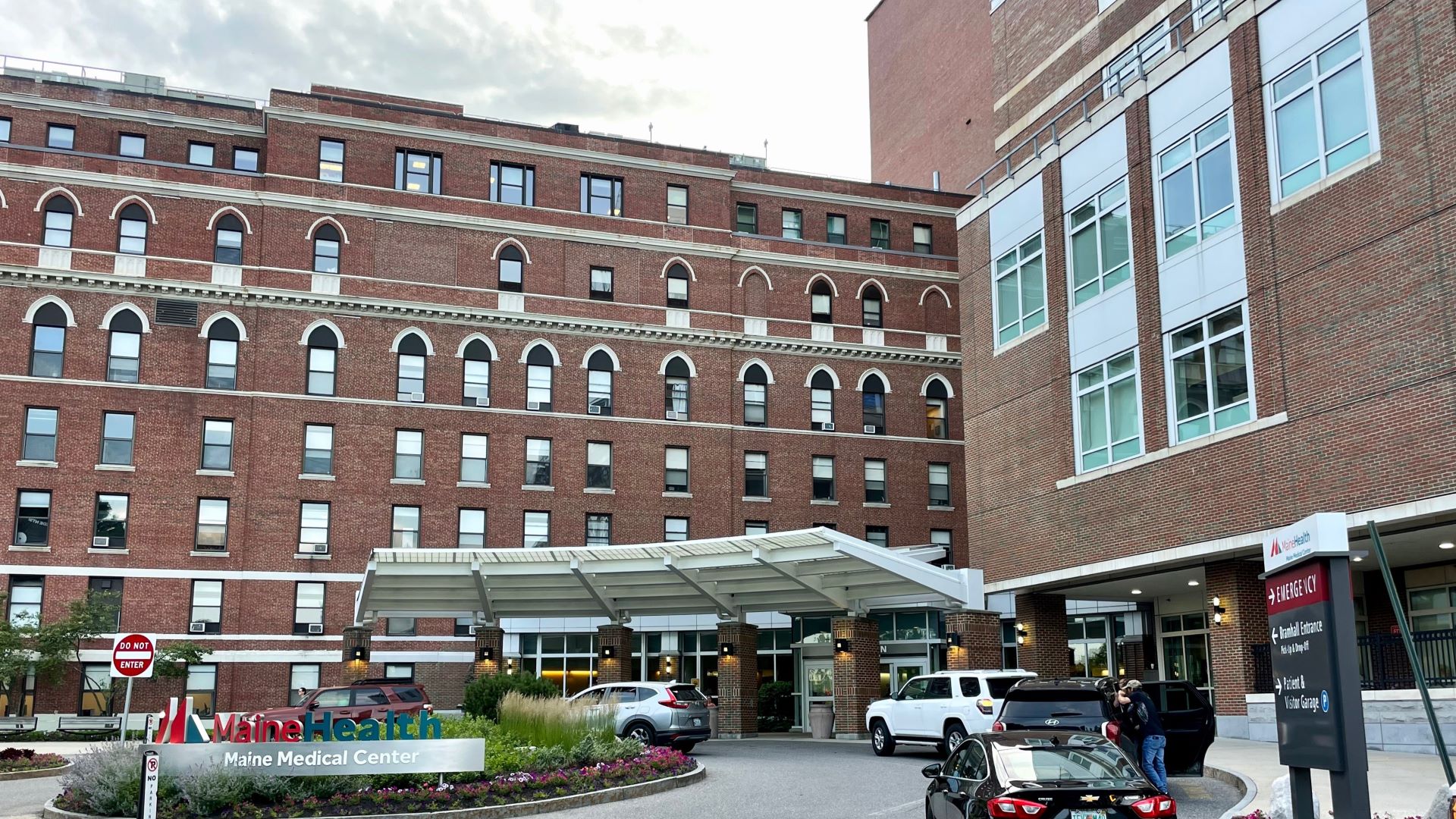
The number of people waiting for mental health treatment in Maine dramatically increased from 561 in 2019 to 8,774 in 2021, the latest figures available, according to a 2022 survey by Maine’s Behavioral Health Community Collaborative of 17 providers.
This increase, coupled with a precipitous decline in the number of practicing psychiatrists, means those needing care may be sent home or stuck in a hospital bed while waiting for a bed in a psychiatric facility to open.
That’s what happened to Lisa*, who has a dual diagnosis of substance use and post-traumatic stress disorder. She recalled spending days in a hospital after a crisis event, then waiting more than a month for a bed at a psychiatric facility.
Lisa* said she does not have an advance directive but has communicated her treatment preferences to her health care team, and has appointed her mother as a health care proxy, a person who can make decisions when she can’t.
Many health care professionals, however, are worried about allowing a person with a mental illness to determine their course of treatment, saying it raises questions and ethical concerns over how best to care for people in need.
It can also get complicated when a person ends up resisting the treatment plan they previously agreed to.
A person with bipolar disorder, for instance, may dictate on a directive to be treated with lithium, an oral medication, said Campbell. But in a time of crisis, they might refuse the medication.
“We can’t force somebody to take an oral medication,” he said. “The person unencumbered by the illness, while they are representing themselves when they are ill, they are not really representing their (future) ill self.”
A breakdown of communication
The lack of awareness of directives extends beyond doctors to emergency response personnel and police officers, who are often the first to respond to someone in crisis.
While mental health advance directives are explicitly defined within department policies, officials in several large departments — including Bangor, Lewiston and Augusta — said they had not heard of or were only vaguely aware of advance directives for mental health.
“I don’t think I have ever seen one,” said Jason McAmbley, a Bangor Police officer. “Someone would have to bring it up, but when you are dealing with someone in crisis, they are not thinking logically and they may not remember it.”
Several officers said safety is the priority when responding to a mental health crisis. If someone is a harm to themselves or others, an officer can take them in under the protective custody statute. Unless law enforcement has been told about the existence of a mental health advance directive before an event, they largely leave it up to health care professionals to determine the treatment.
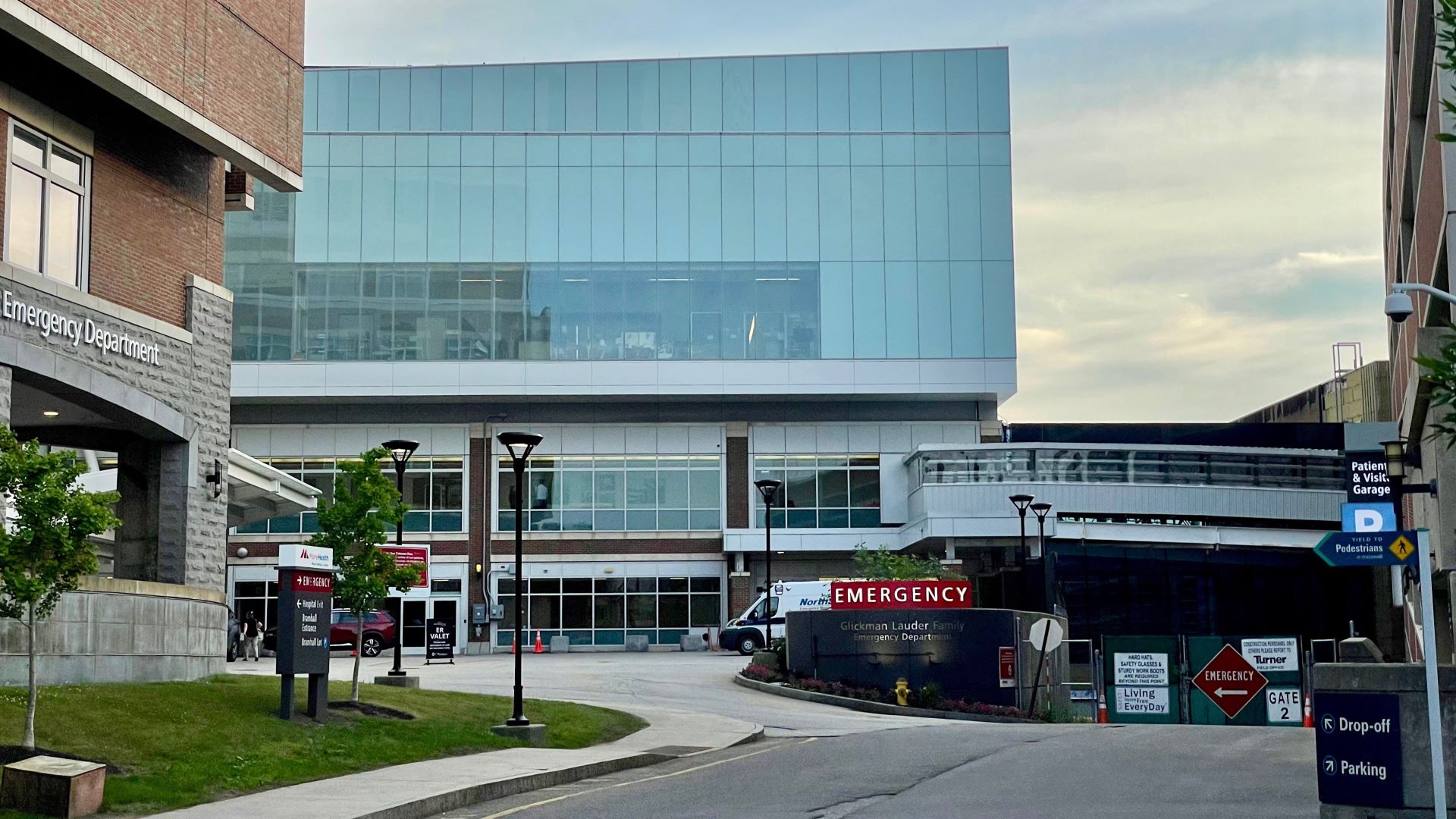
Awareness among emergency responders also varies.
Rob McGraw, executive director of Atlantic Partners EMS, said in an email he does not have a “working knowledge” of these forms and his company doesn’t have a specific protocol for dealing with them.
But others, like Melissa Adams, the program coordinator for Maine’s emergency medical dispatch, said while the agency does not use the terms ‘mental health or psychiatric advance directive,’ they do ask 911 callers if they have a “safety plan.”
This breakdown of communication between departments and patients, said advocates, can lead to a cycle of hospital visits and release, referrals to places with no follow-ups, and then the process starting again.
They argue that psychiatric advance directives help cut through the stigma of mental illness while allowing the person in crisis to keep “driving the boat.”
A directive helps a patient identify what is needed before needing it, said Maline of the Consumer Council System of Maine. But without consistent protocols and easy access, the lack of awareness and understanding has led to little effectiveness.
“It’s sad, is what it is. The system is so broken,” said Lisa*. “There is not a lot for crisis situations. That whole situation is totally degrading to a person, and it really shouldn’t have to happen.”
*The Monitor is using a pseudonym for privacy reasons
Correction: The Monitor incorrectly identified Dr. James Wolak’s position in a previous version of this story.





